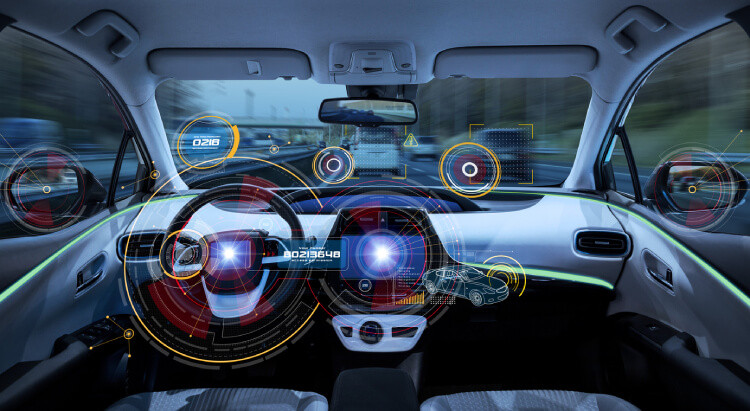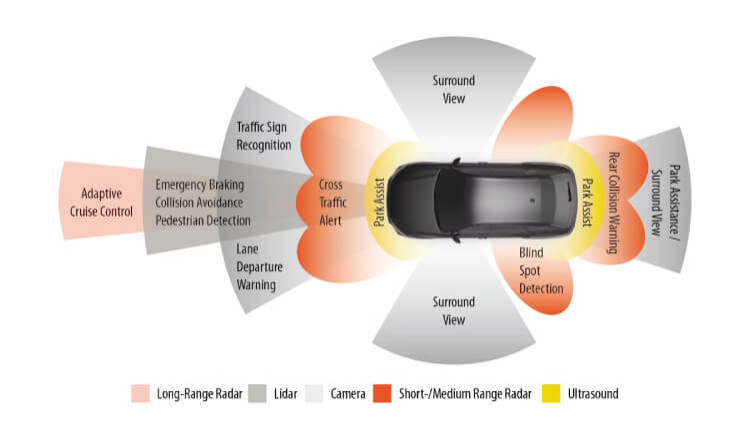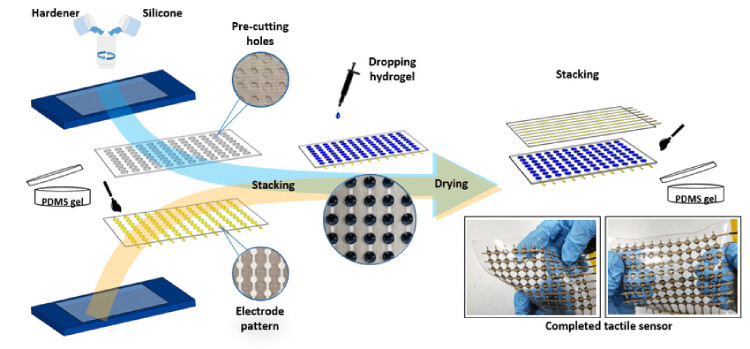Tactile Sensors: Bringing Human Touch to Autonomous Vehicles
Insights | 07-10-2024 | By Paul Whytock

Key Things to Know:
- Tactile sensor technology is set to significantly enhance autonomous vehicle safety by improving the vehicle's ability to "feel" road conditions, working in tandem with existing sensor systems.
- Human-like perception in driving decisions remains a challenge for AVs, but advances in tactile sensing aim to mimic the nuanced abilities of human drivers.
- Sensor fusion—combining tactile sensing with visual, radar, and GPS systems—will improve decision-making, especially in unpredictable driving environments.
- Significant market potential exists for advanced driver assistance systems (ADAS), with the sector expected to reach $80 billion by 2030, driven by innovations in autonomous technology.
Introduction
Most modern cars these days have some form of electronic stability control (ESC), and these make an important contribution to road safety. Proven systems like traction control, lane position monitoring, anti-lock braking (ABS) and blind-spot monitoring have been around for a while.
Nowadays, many of these ESC systems form part of the overall advanced driver assistance systems (ADAS) in very modern vehicles.
All of this is very positive progress because it cuts accidents and saves lives. It's well documented that human error or just downright dangerous use of a vehicle kills people, a fact supported by the World Health Organisation that states 1.19 million people a year die in traffic accidents.
It is this fact that fuels much of the ambition to progress with the development of autonomous vehicles (AVs) and, of course, the new revenue streams it potentially represents for many companies developing the necessary technology and systems.
AV technology has progressed well but there are still many recognised limitations that continue to challenge the entrepreneurs. One example is the geographic limitations of AVs. Certainly, they work well in road networks formed as logical grid systems like Milton Keynes, but ask one to navigate London's Hyde Park corner or the Arc de Triomphe in Paris, and it wouldn't cope so well. But humans manage them.
And even in grid-style road systems, what could have been a perfect route to work last week may suddenly one morning have roadworks that have popped up with all the confusing traffic deviation signs.
Perception, feel and ability
So, humans still have a lead when it comes to driver decision-making. They have perception, feel and the ability to think and decide. This, of course, as we know, is not infallible, but it is more advanced than current ADAS, which relies purely on the information it is fed by the plethora of sensors located in the vehicle.
It is the development of these critical sensor functions that will make an enormously importation breakthrough in the design of future AVs.
To enhance the capability of ADAS the International Society for Photogrammetry and Remote Sensing states that engineers are using sensors with many perception capabilities. The idea is to create a more detailed picture of the situation an AV finds itself in and provide additional data that will help it to make the right decisions.

credit: dewesoft.com
Consequently, a great deal of research is being done to design such sensor multi-capability. It is hoped that not only will this improve ADAS current capability on things like situation and object recognition but also the detection and warning of possible dangerous situations. All this additional data will be fed into future algorithm capability to ensure its optimum use. So, there is no doubt that sensor fusion and perception will be at the heart of future ADAS systems.
The human touch
But there is a human ability that perception sensors cannot emulate, that of feeling what's actually happening or potential might happen. It's called being tactile, and this is where the big breakthrough in sensor design will truly ESC capability.
Many will have heard of the expression of driving by the seat of your pants. During my career, I have had opportunities to speak with professional racing drivers, and one of the things that sets them apart from everyday drivers is their tactile ability.
They will feel when there is a possible problem that could occur. They know when the grip between the tyres and road surface is becoming compromised, they know when the feel of a vehicle is coming into corners either too fast or at an incorrect approach angle and because of their very heightened reaction capabilities can often do something about it.
Reaction times
It's well established that a Formulae 1 driver's reaction time is 0.2 sec whereas everyday drivers' time can be as high as1.3secs; and a lot can happen in a second when a car is moving a 40mph.
The aim here is that tactile sensors will create ADAS systems that will recognise dangers by having a tactile ability but will be able to react as fast, if not faster, than an F1 driver.
Sensor fusing
A big design push is happening to develop sensor fusing which combines all the elements of perception sensing with the human touch of tactility and all the information from sensors in ADAS systems such as cameras, radar, Lidar, GPS and other virtual and inertial sensors operating in the vehicle.
So, what's going to make it work in a vehicle? Tactile sensing is based on transduction, whereby a transducer converts a signal from one type of energy into a signal. A tactile sensor is an electromechanical transducer that a stimulus into an electrical signal and relays it to a controller that processes and interprets the data.
The idea here is to imitate human biological tactile sensing where receptors in our skin perceive external stimuli and convert them into electrical signals which travel via the central nervous system to the brain which decodes them and interprets them.
This will happen in a vehicle, but it will be the controller that interprets the signals and then the algorithm that prompts the right reaction from the vehicle's AV systems.
Looking at one automotive area where tactile sensing could prevent possible accidents is tyres and their relationship with the road. By embedding tactile sensing in the tread of the tyre, information on the type of road surface, its current condition like wet, dry or icy, the pressure of the tyre and its condition, the level of friction between the tyre and the road and the cornering, acceleration and braking forces being exerted by the vehicle. Potential accident possibilities could be assessed, and the AV could be made to adopt a safer attitude.

credit: researchgate.net
What makes a tactile sensor?
A tactile sensor consists of a variety of linked touch sensors, and there are no established industry standards for what a tactile sensor should be or be capable of, but there are some recommendations. Single-point contact is preferred, but the sensory area can vary in size. The sensitivity range should span 0.4 to 10N and have a bandwidth of 100 Hz. For tactile sensors, many functions can be measured using an array of 10-20 sensors square.
Industry experts on sensing think that one of the major challenges with today's sensor technology is the processing of signals. The ideal solution is to develop a complete sensing system rather than individual sensors combined with individual interfaces and interconnections. This would allow the signal processing to be adjacent to the sensor or part of it.
Again, there are no established industry standards or operation specifications on what a smart sensor should be or do.
Given the interest of the global electronics industry in the development of smarter ESC systems and the generation of improved ADAS for autonomous vehicles (AVs), there is no doubt that a lot of developmental work will be done to create highly capable tactile sensors for automotive applications.
As mentioned, AV progress can represent financially advantageous revenue streams for technology companies, and the global tactile sensing market is undoubtedly one of them.
In terms of the overall autonomous vehicle systems and components market, analysts at McKinsey & Company estimate the overall market value for that sector could reach $ 80 billion by 2030.

